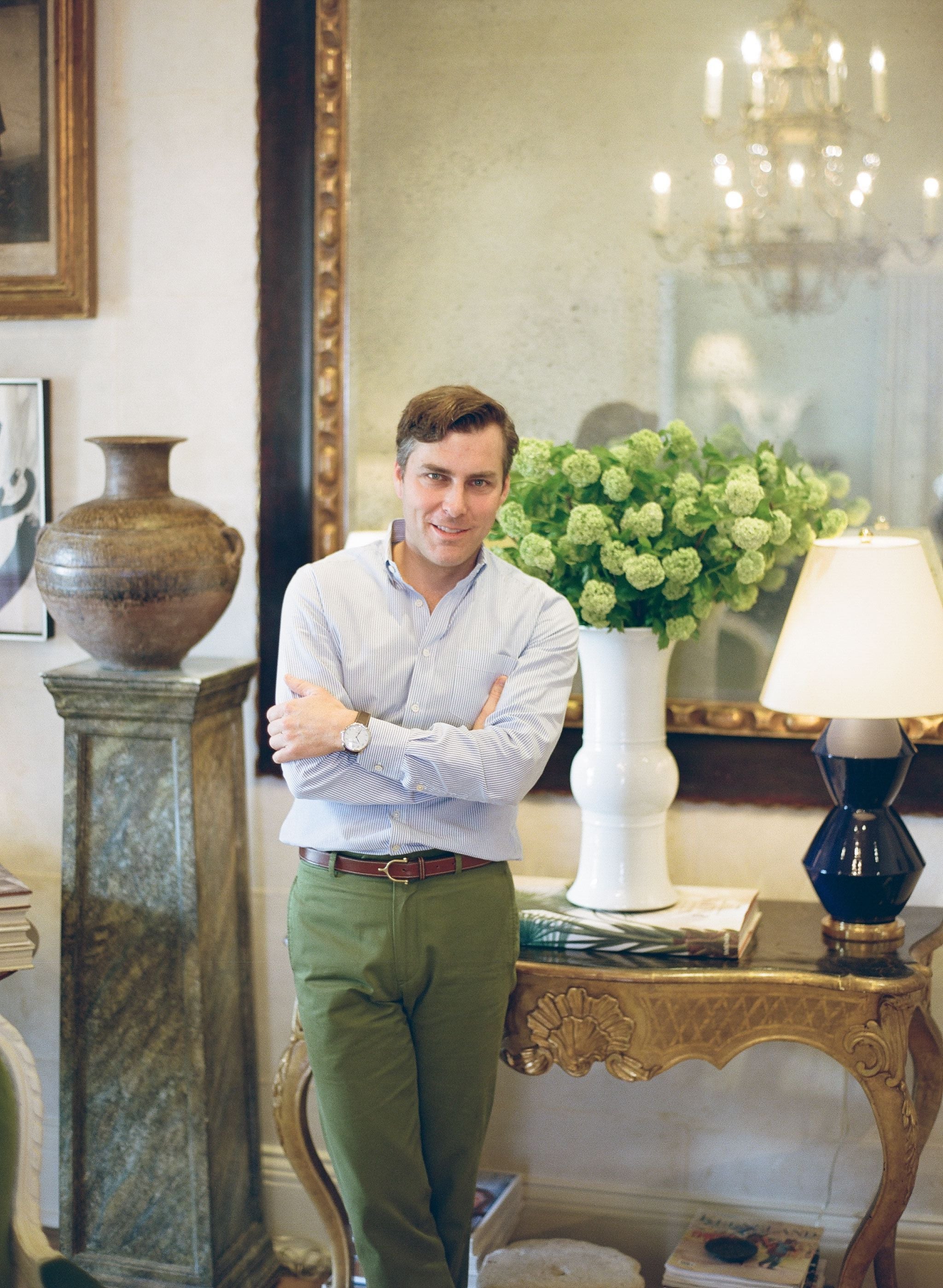The 50 States Project is a yearlong series of candid conversations with interior designers we admire, state by state. Today, we’re chatting with Matthew Carter, owner of Lexington, Kentucky–based Matthew Carter Interiors. In addition to sharing images of his own home, he talks about designing homes for international clientele in a horse farm hub, why he hates rooms that look planned, and his biggest red flag in job candidates.
Are your projects moving forward right now, or is a lot of your work on pause?
We’ve been working on one large house for about two years and it’s supposed to start installing in early June, so we’re full steam ahead on that—the clients are from New York and Palm Beach, but they have a farm here. The contractors are getting things ready, we’re trying to dot all of our i’s and cross all of our t’s because we’re supplying literally everything that goes into the house. We’re fortunate that the project hasn’t paused. We have another client from Houston who’s doing a farm up here that has paused because he’s kind of freaked out by the virus. I’d say about 60 percent of everything else is a go and 40 percent have said, “You know, let’s just regroup when we can meet face to face again.” But luckily we have enough going on that I’ve stayed swamped, so I guess no complaints, right?
Can you tell me about Lexington in general—the types of clients you have, the types of projects you’re typically working on?
Lexington is surrounded by some of the world’s most incredible thoroughbred horse farms, which make up 50 or 60 percent of my business. The city draws a really international crowd because of the horse business. Half the people live here full-time; the other half aren’t necessarily here all the time, but have [built] an incredible presence here.
Lexington has a lot of really beautiful old neighborhoods where we work—and we do a lot of vacation houses, because the clients see what we do for the farm or the house here [and rehire and refer people to us]. When their sister or brother calls or if the clients have houses in other places, nine out of 10 times we follow them, which has been great.
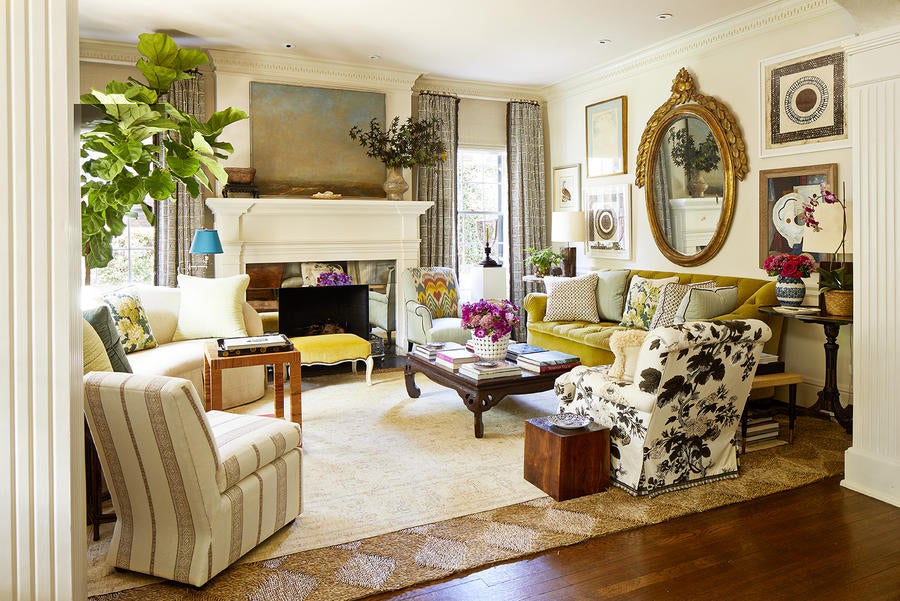
How big are those projects? And how many are you working on at a time, typically?
We’re probably working on six to eight large projects at any given time, and then a couple of smaller projects for longtime clients who want to redecorate a living room, or do this or that. I’ve been doing this for 25 years, so I have developed a really great repeat clientele, and thankfully they keep calling.
Do you always say, ‘Yes, absolutely’ when those calls come in—or do you sometimes have to say, ‘Yes—but in two months’?
For a longtime client, I would say, “Yes, absolutely.” I wouldn’t probably postpone any of these people. But for a new client, depending on how busy we are, we might have to say, “Can we wait six or eight weeks to meet? Just let me catch up.”
What was your journey to starting your own firm?
I was one of those kids who always loved houses, drawing floor plans and studying gardens and interiors. My grandparents were really meticulous, and they cared a lot about their environment, as did my parents. I remember going to my grandparents’ [house] was a treat, [but] I didn’t necessarily know that [designing homes] was a career. In fact, my grandfather was like, “Absolutely not. That’s not a thing.” And I was like, “Yeah, but I love it! And I think that I can make a go of it!” In the end, they were very supportive and encouraging.
As a senior in high school, I joined a mentoring program where we shadowed different professionals, so I asked if I could shadow at a design firm. The idea was that you would shadow in different professions [to try them out], but I stayed at two different design firms because I loved it so much. I ended up working at the second firm through college and after college for a few years. When I was 28 I started my own firm.
You grew up in Lexington, right?
Yes. I love to travel, but I’m planted here—this is home. I love the people and the style; I love that the horse business is here, because it brings such an interesting and diverse clientele. I probably wouldn’t have stayed if that wasn’t here, because I think I would have wanted more. But you know, people that could live anywhere in the world—literally—choose to live here because of its beauty.
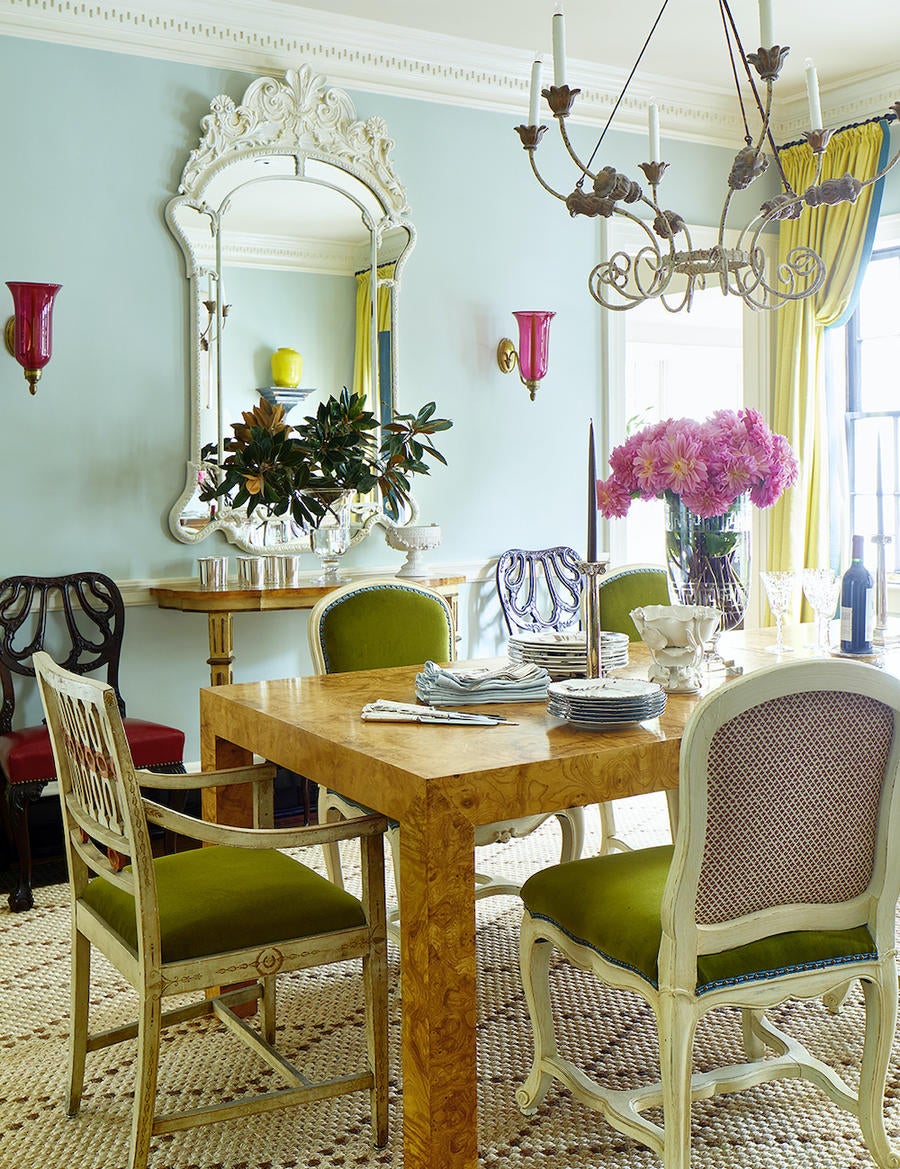
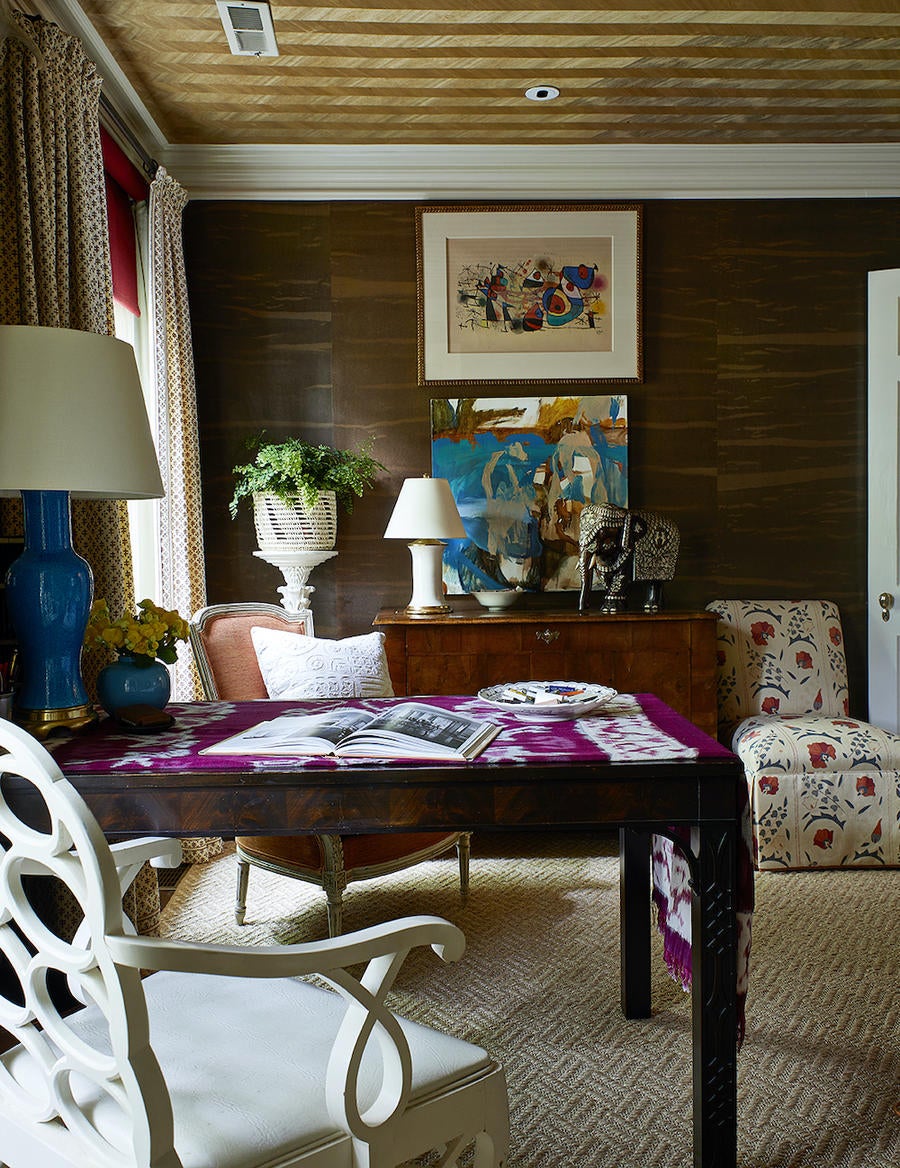
How did you know it was time to start your own firm?
I remember talking to a great decorative painter in Lexington that worked for all of the designers, and he said: “When the time has come for you to leave the firm and start your own thing, you’ll just know.” And I did. It was like a switch flipped and I just really wanted to have my own company. My partner and I were living in a little bungalow in an old Lexington neighborhood and I started the business in my basement. I was doing a house for [a family that owns an airline] on a farm that they had recently bought and [the CEO] came over to the basement to meet with me, and that’s how it all started. After that, it was just word of mouth.
One of my first clients was [equestrian and philanthropist] Josephine Abercrombie, who has a farm called Pin Oak Stud. The house was designed by the famous British architect Quinlan Terry, and it was originally decorated by the late Anthony P. Browne, a well-known English decorator who was based in D.C. They did an incredible job on that house. She called and asked if she could come meet with me, and we just hit it off. I remember she brought a book [to the meeting] and said, “Point to a few things in this book that you love.” I did, and she was like, “Those are all of my favorites! Let’s work together.” She was doing a new farm office and wanted to refresh some things in the house; from that point on, it snowballed into her friends calling me, their people in the horse industry calling me, and other industries. I remember someone at the firm where I used to work saying, “You just need one good client.” From there, it really built.
What kind of team do you have now, and how did you add people over time?
For a number of years I did it by myself.
That’s hard.
It’s hard. I mean, really—it’s hard. I was working until 11 p.m. I was young. I was doing everything—placing the orders, designing, writing the checks, and I thought, “I cannot do this forever.” My partner and I have been together for 22 years and he was like, “OK, you need some help.” He’s a principal architect at a larger firm, and he was like, “You have to have some balance.” So I hired an office manager. We bought an old historic house in a business district, so I moved out of the basement and set up the office where I still am today.
What’s the house like?
It’s a really pretty old house—it dates to 1865 and has 11 1/2–foot ceilings. It’s quite beautiful. My office manager made my business much more professional. She came in and changed my life. From there, I hired another assistant; right now, there are four of us in the office, plus accounting and that kind of thing.
Are you the only one designing?
No. I have an assistant who is an interior designer, so she’s designing too.
How do you figure out how the workload gets divided up?
I’m the big-picture guy. And Sarah [Marks], my assistant, is great. One, she has fabulous taste. And two, she knows what I like. She started with me when she was in college, then graduated and became full-time. She was able to learn the way we do things and the style in which we do them. I’ll source most of the fabrics and do all of the colors, and she’ll come in and pull things together. She does all the work orders and scheduling. She interacts with clients when I can’t. It’s great.
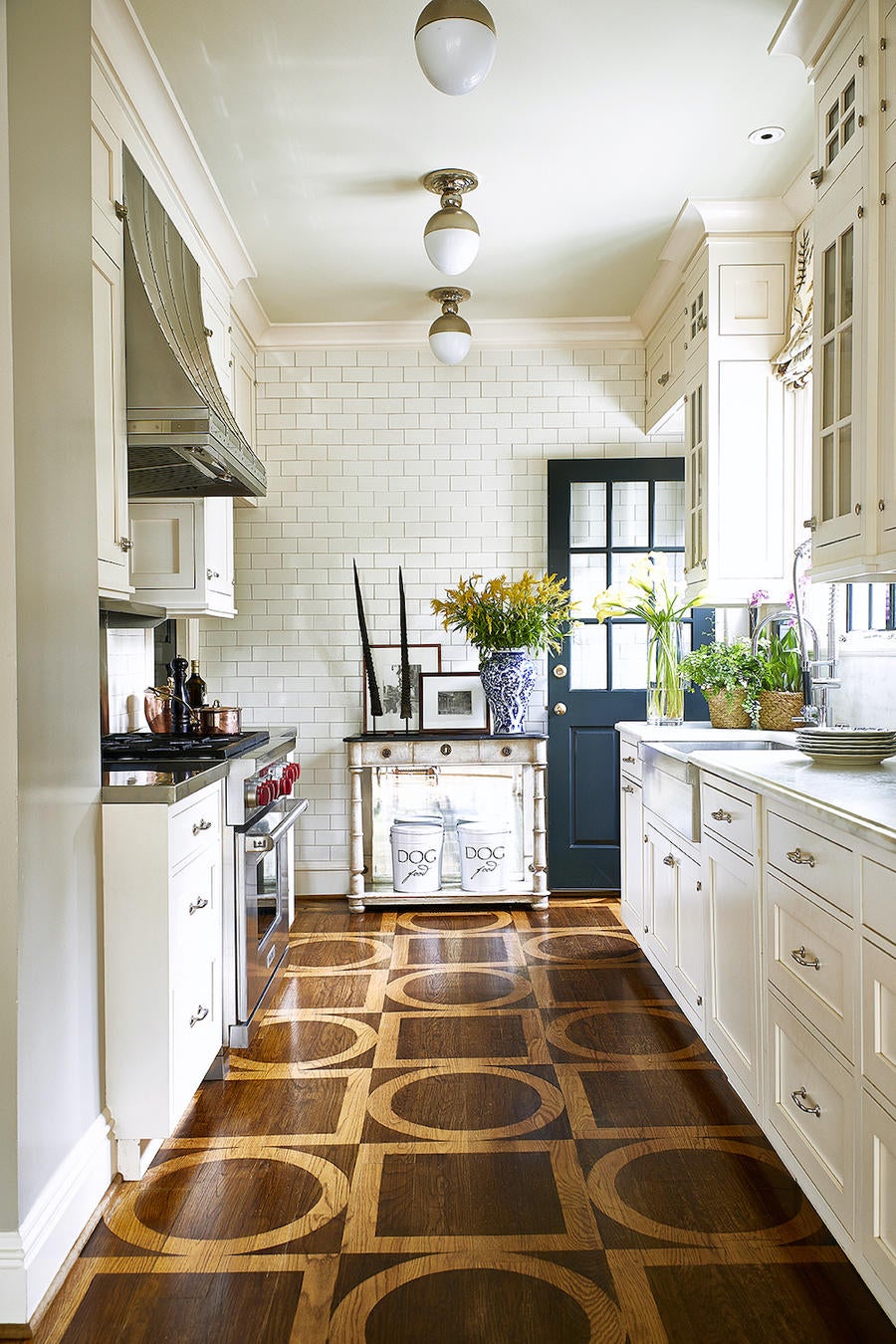
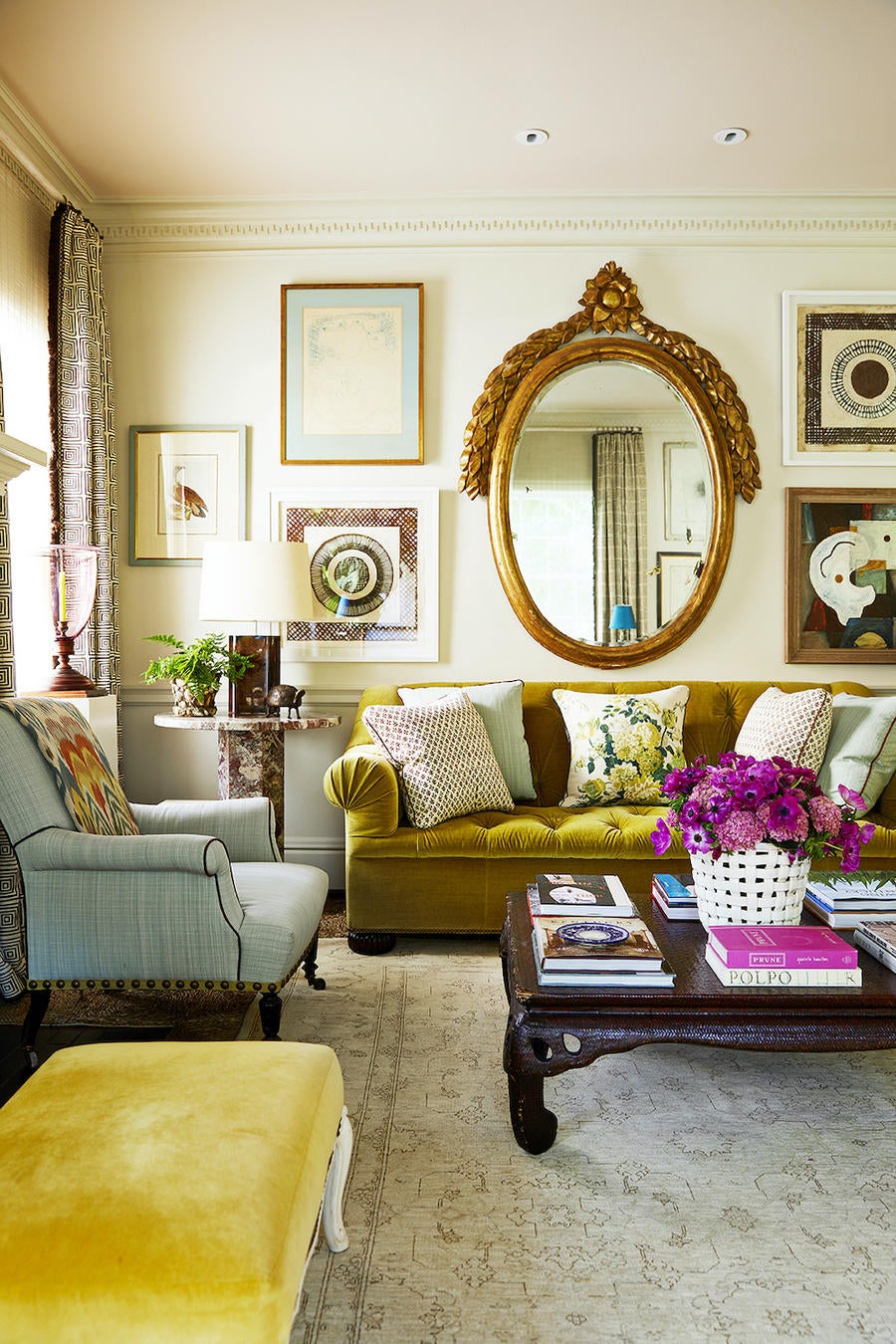
What are you looking for in new hires?
I’m looking for someone with a great work ethic and fabulous taste. I can tell if someone walks in the door and I absolutely hate what they’re wearing, I know it’s not going to work out. I need someone that really understands style—and who is not afraid to get their hands dirty. I know some people think this [career] is glamorous, but all of your readers know that it’s really not. We’re crawling around on the ground and plugging in lamps behind beds, and it’s work. So I really need and expect someone to be able to get down into the nitty-gritty.
Where do you shop and source from most often? Are there local resources that are go-tos for you?
I travel a lot. I shop in Atlanta, New York and West Palm Beach quite a bit. Louisville has some great antique stores and dealers. We have a pretty vast resource library here in Lexington. There are times when I’ll go to ADAC or to the D&D Building and send a bunch of samples back, but for the most part, I source fabrics and colors from here, because we have everything.
I really don’t like rooms that look super planned, so we’ll scheme the overall colors and fabrics and maybe a rug, but as far as the exact chest that’s going to go on the exact wall, with the exact lamp, I don’t really do any of that in the beginning. We’ll put together some sort of budget if clients want one, but I don’t show them everything in the beginning. Because I think, in my opinion, it looks too planned if you do it that way, and the room has a tendency to come off looking like a showroom. I just don’t love rooms that look like that, and my clients expect more. We mix in a lot of antiques, which always gives a room a certain amount of permanence and established style. Along the way, from the beginning of the project to the end, I’ll put together presentations of things I’ve found—this chest, this sideboard, a fabulous antique rug, an amazing console table—and they’ll give me their 2 cents and usually it’s approved.
Would you buy it and then show it to them? Or are you always showing them first?
It depends what it is. Sometimes I’m just out shopping and I buy a bunch of stuff for my inventory because I like it and I know it’ll work somewhere. Sometimes I’m looking for a specific size of a piece of furniture, and those things can be quite expensive, so then I’m not going to buy it unless a client likes it.
I like that along-the-way approach.
To me, it keeps it from being too staged. I just see a lot of rooms that feel very planned. And in Lexington, it’s a different vibe. We’re not super Southern, but houses here definitely have that kind of feel. I don’t think you’d look at my work and think, “too stodgy,” but I do love patina mixed in. No matter how much money you spend on a piece of furniture, I don’t think it looks as good as something it’s trying to imitate. You can pay $10,000 for a new chest, and it still doesn’t look as beautiful as what it’s trying to be, which is an old one.
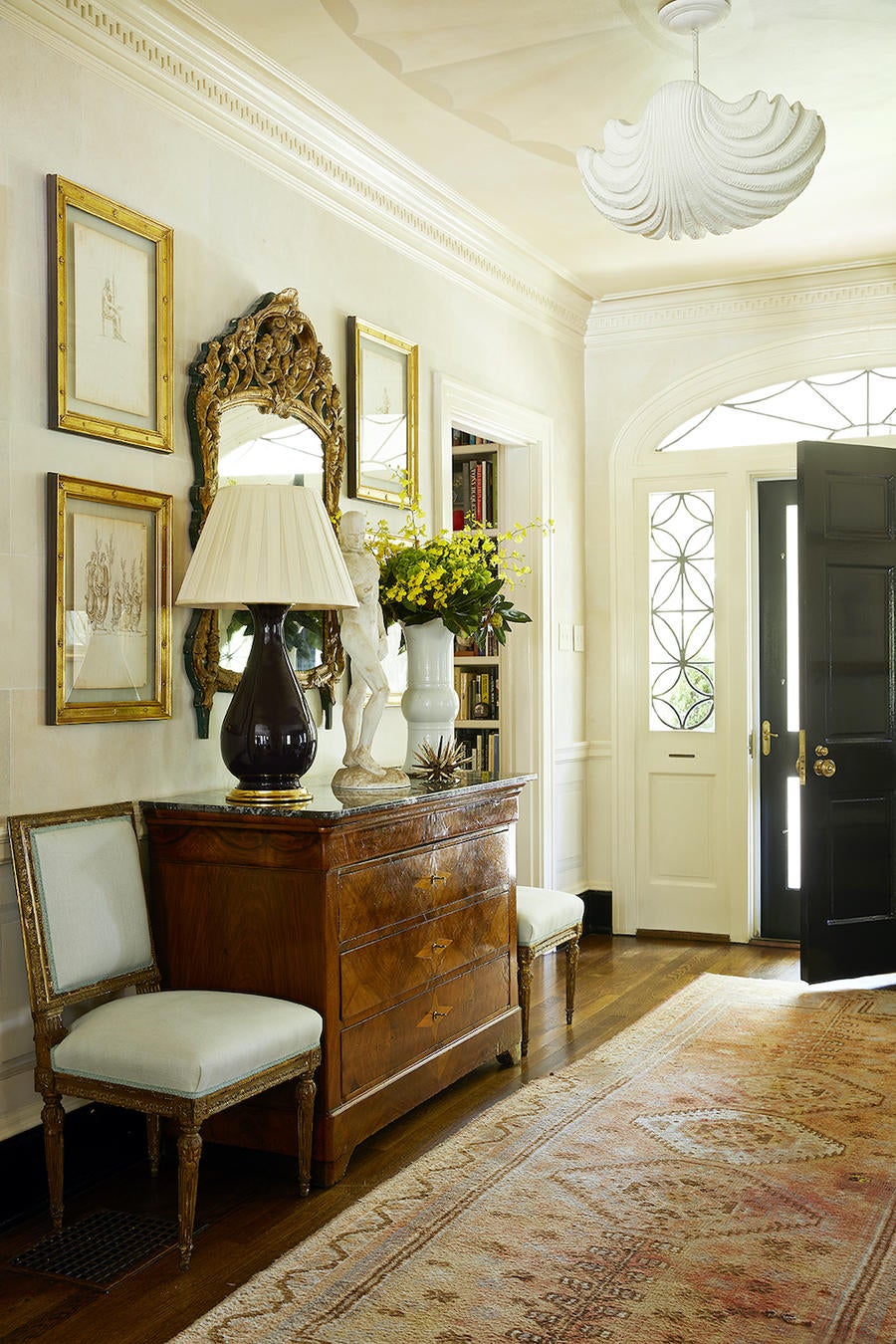
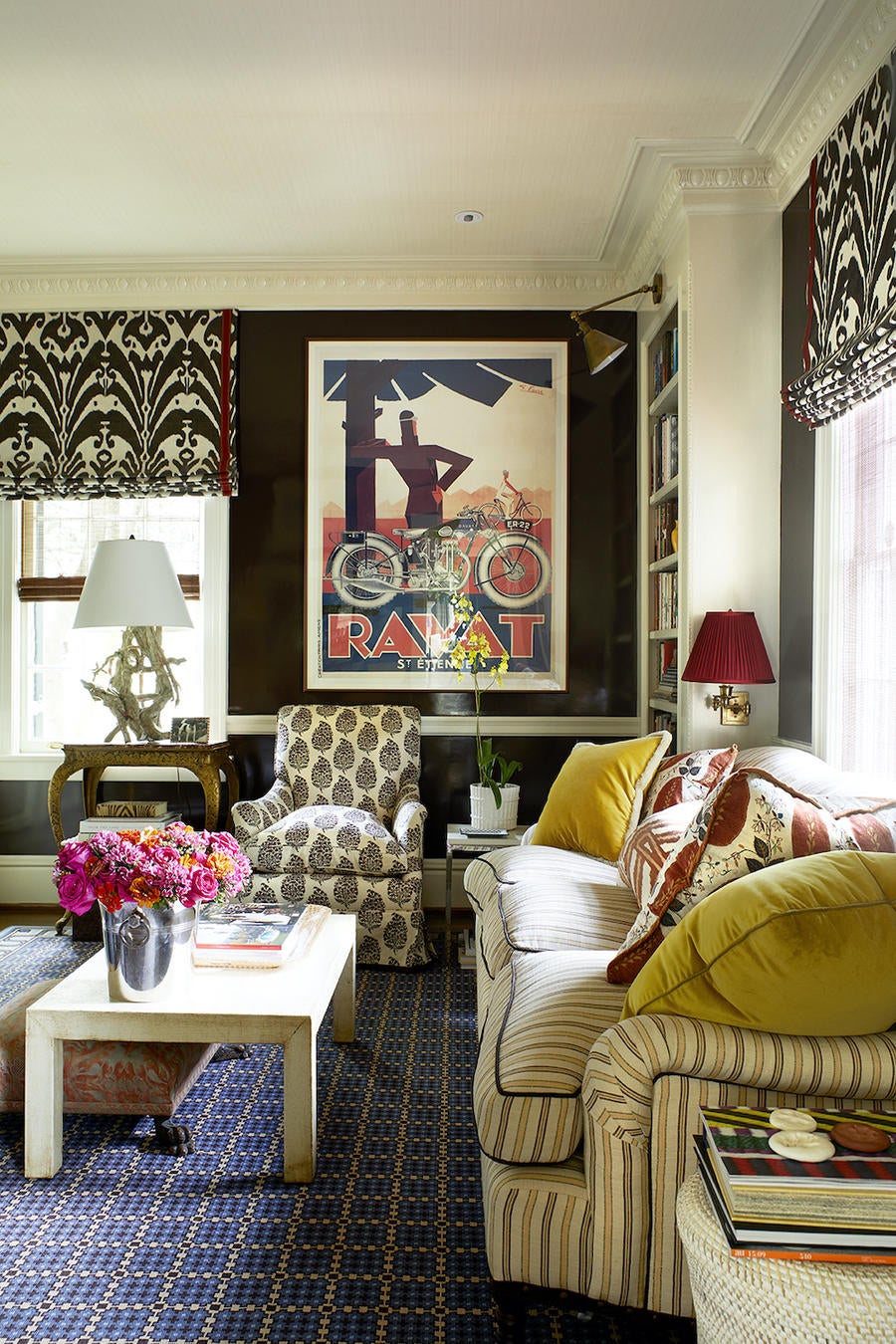
How does that change your initial presentation? Instead of saying, ‘Here’s every lamp, here’s every rug, here’s every bed,’ what are you showing the client?
My initial presentation is the layout of the rooms, the upholstered furniture styles, the style of the curtains, all the fabrics, wallpaper and colors. And maybe if there’s a beautiful chest or a gorgeous antique rug, I’ll show that. But as far as every little piece of the puzzle, I don’t do that. And my clients, frankly, are busy enough that they don’t really have time [to micromanage]. They want to get the overall feel of what the room and the house is going to look like, but they trust me implicitly to do the heavy lifting.
You talked a little bit about style—how do you describe your aesthetic?
I like 1970s raffia furniture mixed in with beautiful Italian walnut and an antique or woven rug, and subtle details like a tiny little contrast micro-welt around a chair cushion or a throw pillow. I’m not terribly into dangly things like tassels and overly done valances—I prefer it to be a bit cleaner. I love comfortable rooms that don’t look too stodgy. I’d love someone who was 25 to walk into a room and love it, and someone who was 75 to walk into a room and love it. I think that can happen.
Is there a look or feel that is quintessentially Lexington?
I think for a long time, Lexington was like a lot of places, particularly in the South—it was pretty traditional. And I feel like my point of view, along with others, changed that a little bit. You had the people that loved modern and the people that loved really traditional, but that mix wasn’t really there when I first started. I always admired decorators who did that beautifully, like [iconic American designers] Billy Baldwin and Albert Hadley. ... It always surprised me that people with really enormous privilege hadn’t really ever stepped outside the box in terms of how their houses were decorated. It was either very traditional or kind of sleekly modern. The idea of combining all of that, which isn’t rocket science—I know I’m not the first person to do it—I was surprised that more of it wasn’t happening. And that’s the kind of style that I loved and continue to love.
When you were first bringing that to town, was it a challenge to convince your clients to merge those two design worlds? Were people ready for it?
I was pretty persuasive. I remember a few people—this was 20 years ago—the older ladies would say, “Oh, he’s so modern!” And it wasn’t modern at all. I look back and it was pretty traditional stuff. But particularly after you get a few projects under your belt and people see the beautiful result, they just trust you.
I’ve always had a point of view, and I’m not afraid to be firm when I’m talking about something I really believe in. If the client just isn’t into it, then we go back and figure out what they do love. But 9 1/2 times out of 10, it works out. And I always say, “Trust me.” It hasn’t happened very often, but there was one time when the client [called when the house was being painted and] said, “You have to help me. I’m not seeing this.” So I said, “Do me a favor and just wait until the rugs go in and the curtains go up and we get a few sofas and chairs. Then if you don’t like it, we’ll repaint it.” And they loved it!
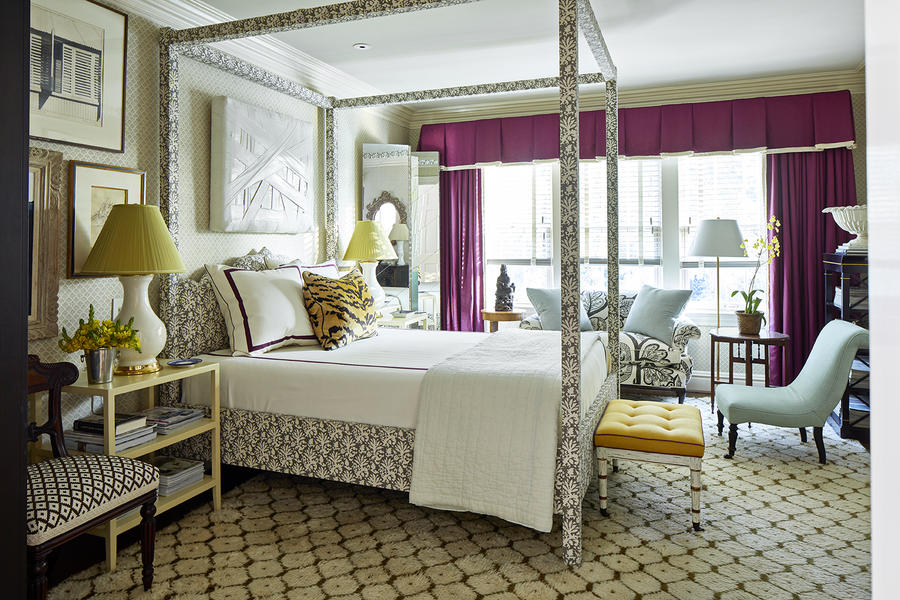
At this point in your career, what is the biggest challenge for you and for the firm?
The biggest challenge for me is not overworking. When I’m in Lexington, I work a lot, including weekends. We have a house in the Bahamas where we go, and I don’t work there. If we’re traveling, I’m pretty good at shutting down. I’m still observing and buying things, but I’m good at relaxing when I’m away. I’m not necessarily good at relaxing when I’m in town.
Is that something you want to change or that you’ve resigned yourself to?
I think it’s probably not going to change. Although I will say that the whole coronavirus thing has really made me take a step back and think: You know, there might be a bit more balance that could be achieved. I think you’re forced to. The phone isn’t ringing all the time like it used to. People are in different locations—some people want to meet with you, some people don’t. Some people want to do it over Zoom, some people want a call. It has forced me to take a step back and reevaluate.
Where do you see an opportunity to grow?
I’m so hands-on that I really like to do a lot of this myself, and we’ve been successful that way. So there is not a lot that I’d change right now. I’ve done it like a lot of people—as a gradual thing that has taken a lot of hard work, but a lot of really enjoyable work.
That’s really exciting.
I like what we have going. I like being able to go to the Bahamas for a week if I want to and just get away from things. We have a great group of clients, a group that I love and have become dear friends. We have dinner together, we’re at the same parties—it’s that kind of relationship. Not strictly a professional relationship.
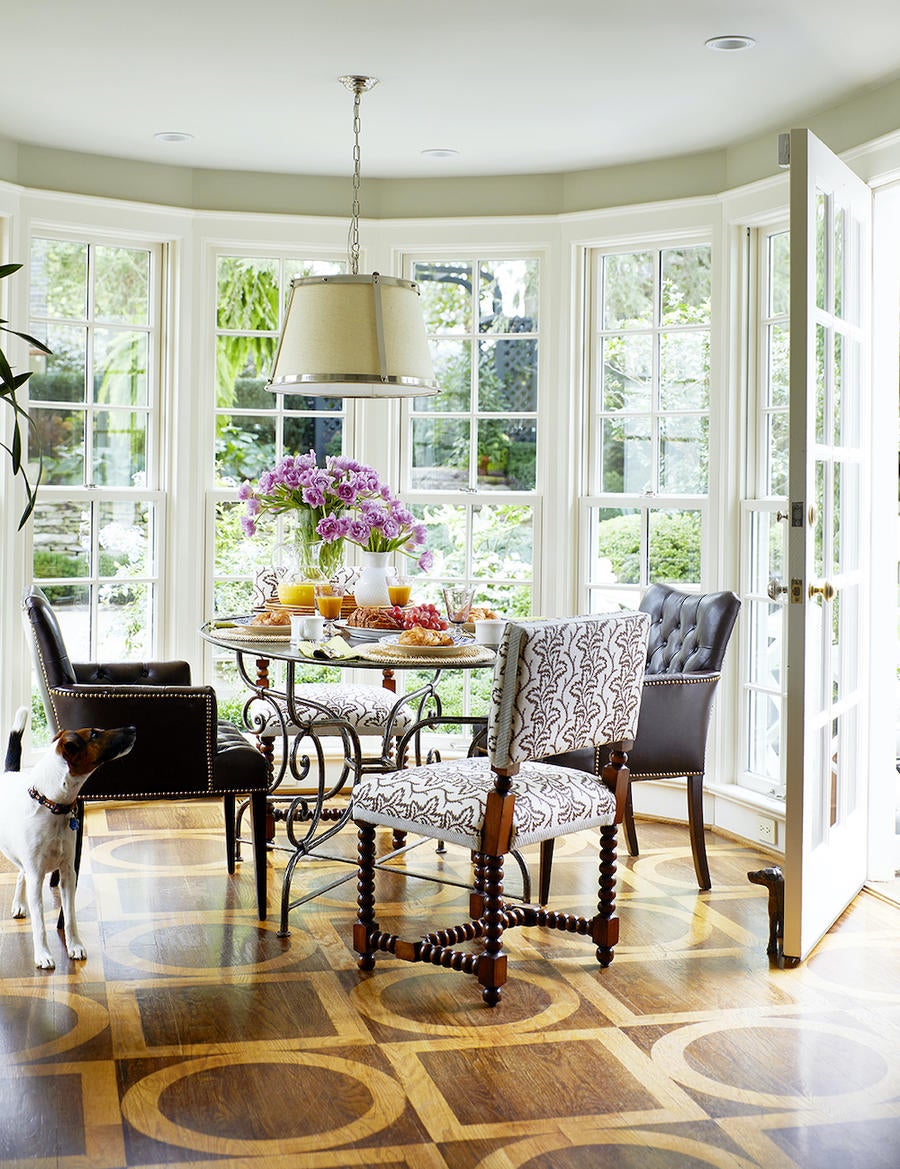
What has been your approach to Instagram?
Instagram is meant for interior designers. It’s all about beautiful pictures, you know? So my approach is a little bit of my personal life and a lot of my work life. Instagram has opened up so many doors that otherwise would not have been opened in terms of being published.
In what way?
Editors look at your Instagram and then reach out based on those pictures. It’s a pretty small world, the world of high-end decorating. But it isn’t as small of a world as it was before Instagram. I feel like it was the same group that continually got published, and I feel like Instagram has opened that up a little bit.
What keeps you inspired?
Travel. We were in Morocco this past fall and Turkey before that, plus Europe and Southeast Asia. I love to travel, especially to somewhat far-flung places. Staying in great hotels and traveling the world as much as you can really opens your eyes as a designer. I wouldn’t be the same without those experiences. I think getting out of your comfort zone makes you not only a better designer but a better person of the world.
To learn more about Matthew Carter, visit his website or find him on Instagram.
















